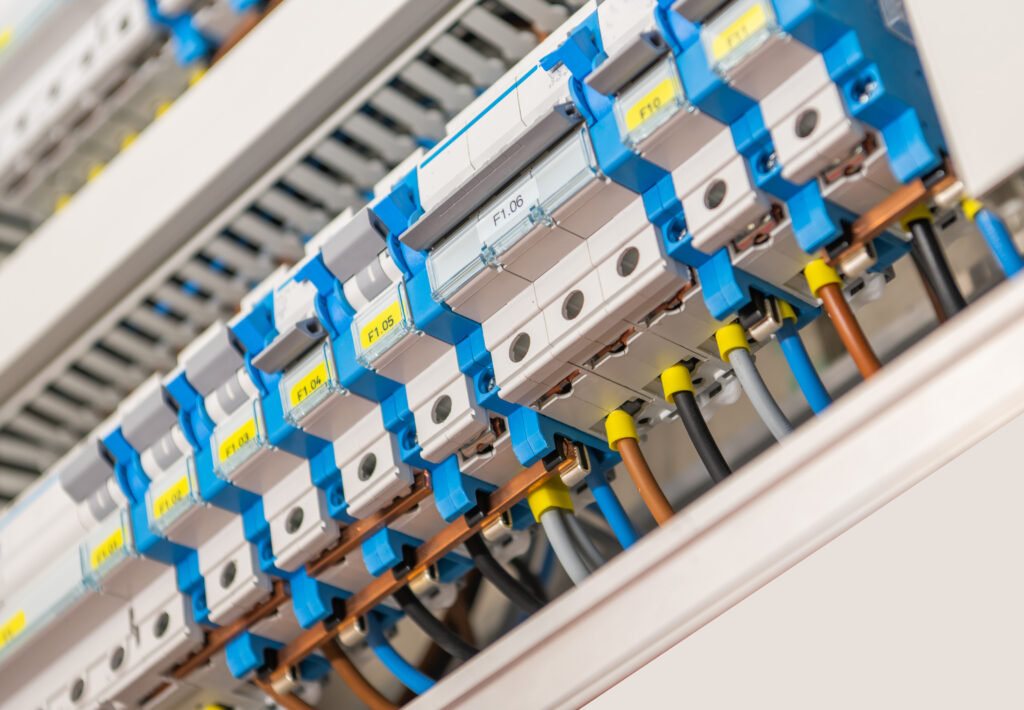Prevent Electrical Hazards with These Tips for Resetting Tripped Breakers in Your Home
Electrical hazards can pose a serious threat to your home and your safety. One common issue that homeowners face is tripped breakers, which can result in power outages and potential electrical fires. It’s important to know how to reset tripped breakers safely and effectively to prevent any mishaps or accidents. In this article, we’ll provide you with some helpful tips for resetting tripped breakers in your home. From identifying the root cause of the problem to safely resetting the breaker, we’ll cover everything you need to know to keep your home and family safe from electrical hazards. So, let’s dive in and learn how to prevent electrical hazards with these tips for resetting tripped breakers in your home.
What is a tripped breaker?
A circuit breaker is a safety device that protects your electrical system from overloading and short circuits. When a circuit becomes overloaded, the breaker trips, cutting off power to that particular circuit. This is a safety feature that prevents damage to your electrical system and potential fires.
A tripped breaker is a breaker that has been triggered by an overload or short circuit. You can tell if a breaker has tripped by looking at the position of the switch. If it’s in the “off” position, it means that it has tripped. You may also notice that certain appliances or outlets are not working, which is a sign that the breaker has tripped.
Why it is important to reset a tripped breaker
Resetting a tripped breaker is important for several reasons. First, it restores power to the circuit that was affected by the overload or short circuit. This means that you can use the appliances and outlets connected to that circuit again.
Second, resetting a tripped breaker is important for safety reasons. Leaving a breaker in the “off” position for an extended period of time can cause damage to your electrical system and potentially start a fire. It’s important to reset the breaker as soon as possible to prevent any potential hazards.
Safety precautions before resetting a tripped breaker
Before resetting a tripped breaker, it’s important to take some safety precautions to prevent any accidents or injuries. Here are some things to keep in mind:
- Turn off all appliances and lights connected to the circuit that tripped the breaker. This will prevent any potential electrical surges when you reset the breaker.
- Wear rubber-soled shoes to prevent electrocution.
- Use a non-contact voltage tester to confirm that the circuit is not live before touching the breaker.
- If you’re unsure about anything, don’t hesitate to call a professional electrician.
Step-by-step guide to resetting a tripped breaker
Here’s a step-by-step guide to resetting a tripped breaker:
- Locate the circuit breaker panel. This is usually located in the basement or utility room of your home.
- Identify the tripped breaker. Look for the switch that is in the “off” position.
- Turn off all appliances and lights connected to the circuit that tripped the breaker.
- Use a non-contact voltage tester to confirm that the circuit is not live before touching the breaker.
- Reset the breaker by switching it to the “on” position.
- Turn on the appliances and lights connected to the circuit to confirm that power has been restored.
Common reasons for tripped breakers
There are several common reasons why a breaker may trip. Here are some of the most common:
- Overloaded circuit: When too many appliances or devices are connected to one circuit, it can overload and trip the breaker.
- Short circuit: A short circuit occurs when a hot wire comes into contact with a neutral wire, causing a surge of electricity and tripping the breaker.
- Ground fault: A ground fault occurs when a hot wire comes into contact with a ground wire or a metal box, causing a surge of electricity and tripping the breaker.
When to call a professional electrician
While resetting a tripped breaker is a simple task, there are some cases where it’s best to call a professional electrician. Here are some instances where you should call a professional:
- If the breaker trips repeatedly
- If you notice any signs of damage or wear on the breaker or wiring
- If you’re unsure about anything or don’t feel comfortable resetting the breaker yourself
Preventing tripped breakers in the future
Preventing tripped breakers in the future is important to keep your electrical system functioning properly and prevent any potential hazards. Here are some tips to prevent tripped breakers:
- Reduce the number of appliances and devices connected to one circuit.
- Avoid using extension cords and power strips, as they can overload circuits.
- Keep your electrical system well-maintained by scheduling regular inspections with a professional electrician.
- Replace old or damaged wiring and circuit breakers.
Conclusion
Resetting a tripped breaker is a simple task that can prevent potential hazards and keep your home and family safe. By taking some safety precautions and following a step-by-step guide, you can safely reset a tripped breaker and restore power to your home. Remember to always call a professional electrician if you’re unsure about anything or if you notice any signs of damage or wear on your electrical system. By taking preventative measures, you can reduce the risk of tripped breakers and keep your electrical system functioning properly for years to come.
